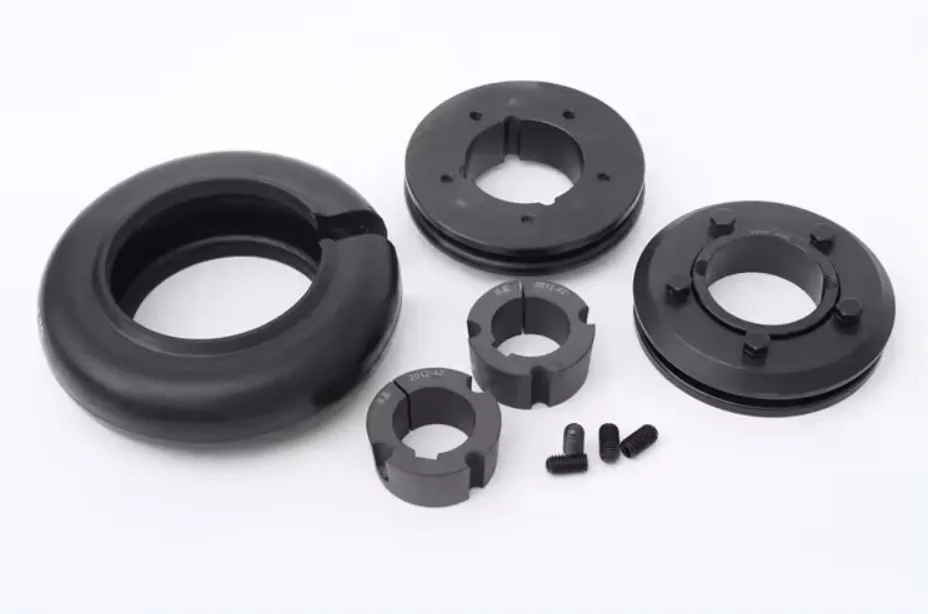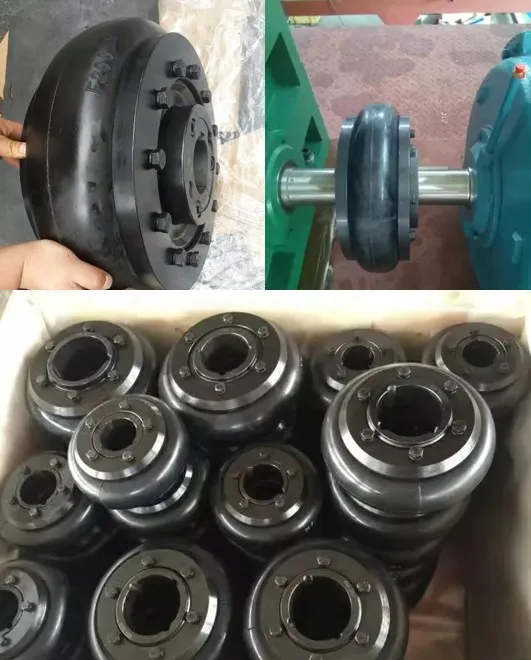rubber coupling for international trade

Introduction
A rubber coupling is a type of flexible coupling made from rubber material. It is widely used in international trade for various applications. In this article, we will explore the features and benefits of rubber couplings and discuss their importance in international trade.
Advantages of Rubber Coupling
1. High Flexibility
Rubber couplings offer excellent flexibility, allowing for smooth and efficient transmission of torque. This flexibility helps to absorb shock and vibration, reducing stress on connected equipment.
2. Dampening Effect
Due to the rubber’s properties, rubber couplings have a dampening effect on noise and vibrations. This makes them ideal for use in machinery and equipment where noise reduction is essential.
3. Misalignment Compensation
Rubber couplings can compensate for angular, parallel, and axial misalignments between the connected shafts. This feature ensures smooth operation and extends the lifespan of the equipment.
4. Corrosion Resistance
Rubber couplings are highly resistant to corrosion, making them suitable for use in challenging environments such as marine applications or industries where exposure to chemicals is common.
5. Easy Installation and Maintenance
With their simple design and flexible nature, rubber couplings are easy to install and maintain. This reduces downtime and increases productivity in international trade operations.

How to Install Rubber Coupling
Installing a rubber coupling is a straightforward process that requires careful attention to detail. Here are the recommended steps:
Step 1: Prepare the Shaft Ends
Ensure that the shaft ends are clean and free from any debris or damage. Remove any rust or burrs that may hinder the coupling’s proper fit.
Step 2: Align the Coupling
Align the coupling halves with the shaft ends, making sure they are properly centered. Use appropriate tools or alignment devices to ensure accurate alignment.
Step 3: Insert the Coupling
Gently slide the coupling halves onto the shaft ends, ensuring a snug fit. Avoid using excessive force that could damage the coupling or the shaft.
Step 4: Secure the Coupling
Using the provided fasteners or locking mechanisms, securely tighten the coupling halves together. Follow the manufacturer’s instructions for the recommended torque specifications.
Step 5: Check Alignment
Once the coupling is securely in place, double-check the alignment of the shafts. Make any necessary adjustments to ensure proper alignment and minimize stress on the coupling.
Step 6: Perform Regular Maintenance
Regularly inspect the rubber coupling for signs of wear or damage. Replace any worn-out or damaged couplings promptly to maintain optimal performance and prevent equipment failure.
Choosing and Customizing Rubber Coupling
When selecting or customizing a rubber coupling for your specific needs, consider the following factors:
1. Torque Capacity
Determine the required torque capacity based on the application and the power transmission requirements. Consider the maximum torque and speed limits to ensure the selected coupling can handle the load.
2. Shaft Size and Misalignment
Take into account the shaft size and the expected misalignment between the connected shafts. Ensure that the rubber coupling can accommodate the specified shaft sizes and provide the necessary flexibility for misalignment compensation.
3. Environmental Conditions
Consider the environmental conditions in which the coupling will operate. Factors such as temperature, humidity, exposure to chemicals, or abrasive materials may affect the choice of rubber material and design.
4. Application Specific Requirements
Identify any specific requirements for your application, such as electrical insulation, noise reduction, or specific certifications. Communicate these requirements to the manufacturer or supplier to ensure the coupling meets your needs.
5. Quality and Reliability
Choose a reputable manufacturer or supplier that provides high-quality rubber couplings. Look for certifications and customer reviews to ensure reliability and performance.

About HZPT
HZPT is a modern enterprise located in Hangzhou, Zhejiang Province. We specialize in the research, development, production, and international trade of coupling products. With a commitment to integrity and innovation, we aim to become a globally influential international group.
Our company offers a wide range of coupling products, including drum couplings, pin and bush couplings, bellows couplings, universal couplings, star couplings, expansion couplings, membrane couplings, and tire couplings. We have a complete and scientific quality management system and our own technology development and testing department. HZPT holds certificates such as CQC, ISO, and CE, ensuring the quality and reliability of our products.
We pride ourselves on providing excellent sales and technical support to our customers. With a customer-centric approach and a focus on collaboration and development, we have established partnerships with over a hundred companies. We invite you to explore our wide range of rubber coupling products and experience the advantages they offer in international trade operations.